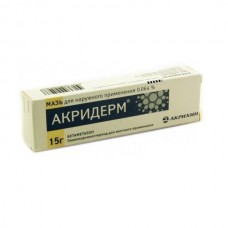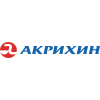Expiration date: 11/2026
International nonproprietary name: betamethasone
Dosage form: ointment for external use
Description: the ointment from white to white with a yellowish tint.
Composition: 1 g ointment contains:
active substances: betamethasone dipropionate 0.64 mg,
other ingredients: parahydroxybenzoate, liquid paraffin, methyl ethyl ketone, petroleum jelly.
Pharmacotherapeutic group: glucocorticosteroid for local use
Code ATX: D07AC01
Pharmacological action
Corticosteroid betamethasone dipropionate has anti-inflammatory, antiallergic, antiexudative, decongestant and antipruritic effect. Hinders the accumulation of leukocytes, release of lysosomal enzymes and proinflammatory mediators in inflammation, inhibits phagocytosis, reduces vascular tissue permeability, prevents the formation of inflammatory edema.
Indications for use
- allergic skin disease (including acute, subacute and chronic contact dermatitis, professional dermatitis, seborrheic dermatitis, atopic dermatitis, solar dermatitis, atopic dermatitis, itching, skin dermatitis, eczema),
- acute and chronic non-allergic dermatitis,
- psoriasis.
Contraindications
Hypersensitivity to any component of the drug, tuberculosis skin, skin manifestations of syphilis, varicella, herpes simplex, post-vaccination skin reactions, open wounds, trophic ulcers, rosacea, acne vulgaris, skin cancer, nevus, sebaceous cyst, melanoma, hemangioma, xanthoma, Kaposi, lactation and children up to age 1 year.
With caution
With prolonged use or application to large surface: cataract, diabetes, glaucoma, tuberculosis.
Use in pregnancy and lactation
The safety of topical use of glucocorticoids at pregnant women is not established, the prescribing of this group of drugs in pregnancy is justified only if the potential benefit outweighs the potential risk. During pregnancy this group of drugs should not be used in high doses or for a long time.
Method of application and doses
Externally. Akriderm® ointment applied thinly to the affected skin 2 times a day — morning and evening.
Other frequency of application may be established by a physician based on the severity of the disease. In mild cases ointment is sufficient to apply, as a rule, once a day, in more severe lesions may need more frequent application.
Duration of treatment depends on the efficacy and tolerability of therapy is 2-4 weeks.
If clinical improvement does not occur, it is necessary to clarify the diagnosis.
Side effects
The local application of corticosteroids may occur: burning,
irritation, dryness, folliculitis, hypertrichosis, striae, acne-like rash (”steroid” acne), hypopigmentation, perioral dermatitis, allergic contact dermatitis. With prolonged use, and the use of occlusive dressings - maceration of skin, secondary infection, skin atrophy, local hirsutism, telangiectasias, rash, purpura. When applied to a large surface of the body, mainly in children, you may experience systemic side effects of corticosteroids (hyperglycemia, glucosuria, reversible inhibition of the function of the adrenal cortex, manifestation of Cushing's syndrome).
When adverse reactions, not described in the instructions, you should consult a doctor.
Overdose
Acute overdose is unlikely, however, when excessive or prolonged use of the drug may chronic overdose, accompanied by a prize nakami Shrine of hyperadrenocorticism: hyperglycemia, glucosuria, reversible inhibition of the function of the adrenal cortex, manifestation of Cushing's syndrome.
Treatment
The corresponding symptomatic treatment. In the case of chronic toxic effect the gradual elimination of the drug.
Interaction with other drugs
Drug interactions with other drugs is not revealed.
Special instructions
If there are signs of hypersensitivity or skin irritation associated with the use of the drug should stop treatment and choose the patient adequate therapy.
With prolonged treatment, when applying the product over a large surface of the skin, with the use of occlusive dressings, as well as in children, possible systemic absorption of corticosteroids.
Children 1 year of age the drug is prescribed only under strict indications and under medical supervision, as it may develop systemic side effects associated with betamethasone. In applying the drug in large surfaces and/or under occlusive dressing may suppress the function of the hypothalamic-pituitary-adrenal system and development of symptoms gipercortitizma, maybe by being given a reduction of urinary excretion of growth hormone, increased intracranial pressure.
On the face often than other surfaces of the body, after prolonged treatment with corticosteroids local action may occur atrophic changes, the treatment in this case should not exceed 5 days.
Akriderm® ointment is not intended for use in ophthalmology. To avoid preparation hit in eyes.
Prolonged use of the drug, its abolition should be gradual.
Release form
Ointment for external use 0,064 %. For 15 or 30 g in a tube of aluminum. Each tube together with instructions for use is placed in cardboard pack.
Shelf life
2 years. The drug should not be used after the expiry date which is stated on the packaging.
Storage conditions
At a temperature of from 15 to 25 °C and out of reach of children.





